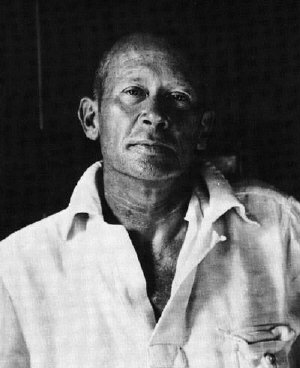 Cummings was born in Cambridge, Massachusetts, to liberal, indulgent parents who from early on encouraged him to develop his creative gifts. While at Harvard, where his father had taught before becoming a Unitarian minister, he delivered a daring commencement address on modernist artistic innovations, thus announcing the direction his own work would take. In 1917, after working briefly for a mail-order publishing company, the only regular employment in his career, Cummings volunteered to serve in the Norton-Harjes Ambulance group in France. Here he and a friend were imprisoned (on false grounds) for three months in a French detention camp. The Enormous Room (1922), his witty and absorbing account of the experience, was also the first of his literary attacks on authoritarianism. Eimi (1933), a later travel journal, focused with much less successful results on the collectivized Soviet Union.
Cummings was born in Cambridge, Massachusetts, to liberal, indulgent parents who from early on encouraged him to develop his creative gifts. While at Harvard, where his father had taught before becoming a Unitarian minister, he delivered a daring commencement address on modernist artistic innovations, thus announcing the direction his own work would take. In 1917, after working briefly for a mail-order publishing company, the only regular employment in his career, Cummings volunteered to serve in the Norton-Harjes Ambulance group in France. Here he and a friend were imprisoned (on false grounds) for three months in a French detention camp. The Enormous Room (1922), his witty and absorbing account of the experience, was also the first of his literary attacks on authoritarianism. Eimi (1933), a later travel journal, focused with much less successful results on the collectivized Soviet Union.
At the end of the First World War Cummings went to Paris to study art. On his return to New York in 1924 he found himself a celebrity, both for The Enormous Room and for Tulips and Chimneys (1923), his first collection of poetry (for which his old classmate John Dos Passos had finally found a publisher). Clearly influenced by Gertrude Stein’s syntactical and Amy Lowell’s imagistic experiments, Cummings’s early poems had nevertheless discovered an original way of describing the chaotic immediacy of sensuous experience. The games they play with language (adverbs functioning as nouns, for instance) and lyric form combine with their deliberately simplistic view of the world (the individual and spontaneity versus collectivism and rational thought) to give them the gleeful and precocious tone which became, a hallmark of his work. Love poems, satirical squibs, and descriptive nature poems would always be his favoured forms.
A roving assignment from Vanity Fair in 1926 allowed Cummings to travel again and to establish his lifelong routine: painting in the afternoons and writing at night. In 1931 he published a collection of drawings and paintings, CIOPW (its title an acronym for the materials used: charcoal, ink, oil, pencil, watercolour), and over the next three decades had many individual shows in New York. He enjoyed a long and happy third marriage to the photographer Marion Morehouse, with whom he collaborated on Adventures in Value (1962), and in later life divided his time between their apartment in New York and his family’s farm in New Hampshire. His many later books of poetry, from VV (1931) and No Thanks (1935) to Xaipe (1950) and 95 Poems (1958), took his formal experiments and his war on the scientific attitude to new extremes, but showed little substantial development.
Cummings’s critical reputation has never matched his popularity. The left-wing critics of the 1930s were only the first to dismiss his work as sentimental and politically naïve. His supporters, however, find value not only in its verbal and visual inventiveness but also in its mystical and anarchistic beliefs. The two-volume Complete Poems, ed. George James Firmage (New York and London, 1981) is the standard edition of his poetry, and Dreams in a Mirror, by Richard S. Kennedy (New York, 1980) the standard biography. e. e. cummings: The Art of His Poetry, by Norman Friedman (Baltimore and London, 1960) is still among the best critical studies of his poetic techniques.
